Starting Strong: What Your First Appointment Involves
Your first dental appointment is a critical step in establishing a foundation for excellent oral health. Understanding what to expect and how to prepare can ease any anxiety and help you make the most of your visit. This guide covers everything from what to bring to a typical procedure flow, along with tips for a comfortable and productive experience.
What to Expect During Your First Dental Appointment
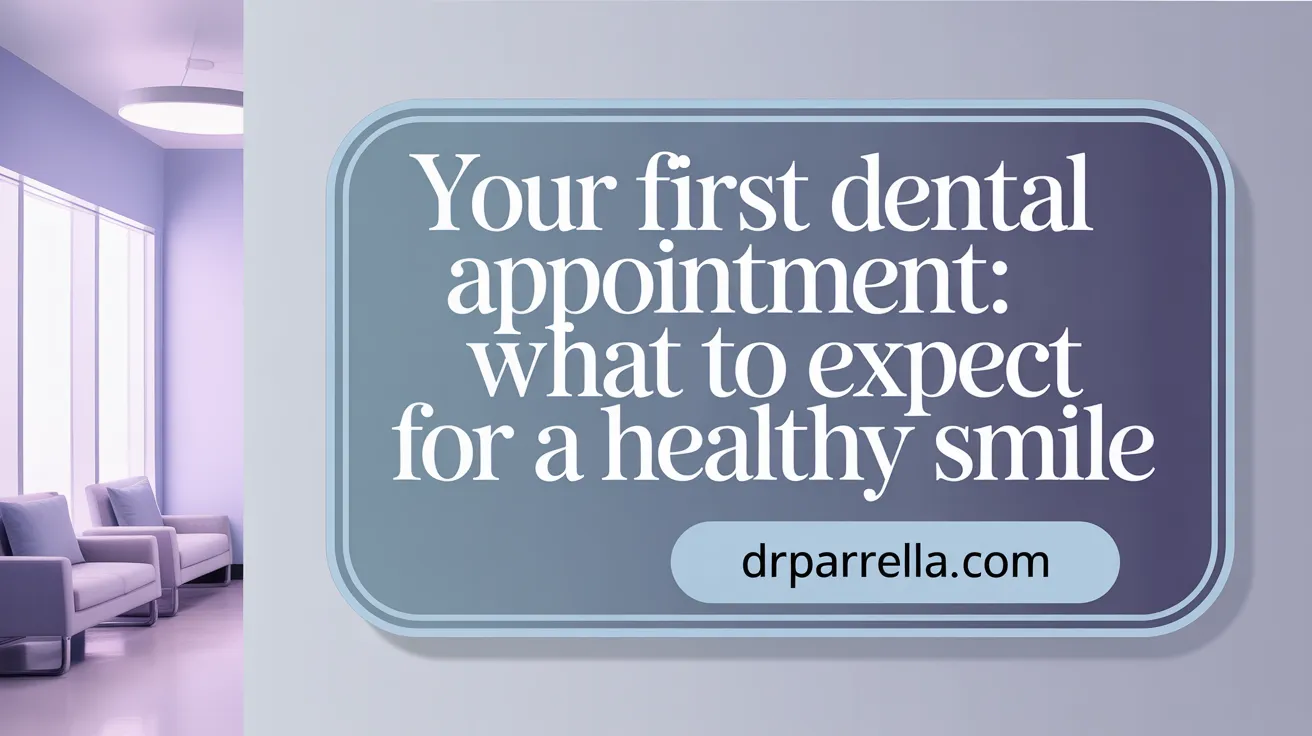
Comprehensive oral examination
Your first visit to the dentist begins with a detailed check-up of your mouth. The dentist will examine your teeth, gums, bite, jaws, and oral tissues. This helps identify any existing issues such as cavities, gum disease, or oral infections.
Medical and dental history review
The dental team will review your medical history, including any allergies, medications, or previous dental concerns. Sharing this information ensures safe and effective care tailored to your needs.
Oral cancer screening
As part of the exam, the dentist may perform an oral cancer screening. This involves inspecting your mouth and throat for signs of abnormalities, ensuring early detection of any serious conditions.
X-rays and their purpose
If it has been over a year since your last X-rays, the dentist will likely take new digital images. These X-rays reveal hidden cavities, bone loss, or other issues not visible to the naked eye. They are quick, emit less radiation, and provide valuable insights.
Cleaning and polishing
Most first visits include a professional cleaning. The hygienist will remove plaque and tartar buildup, polish your teeth, and review effective home brushing and flossing techniques. This thorough cleaning helps prevent future dental problems.
Treatment planning
After examining your mouth and reviewing X-rays, the dentist will discuss findings and recommend treatment options if needed. They will help you understand costs, insurance coverage, and steps for ongoing care.
Patient-dentist communication
Your appointment is also a time to ask questions. Communicate your oral health goals, whether for cosmetic improvements or general maintenance. The dentist will provide guidance tailored to your needs.
Additional details
The entire appointment typically lasts about 30 to 45 minutes. You should arrive early, bring your insurance and medical documents, and be prepared for some brief procedures. The first visit sets the foundation for a trusting relationship, dedicated to your long-term oral wellness.
Essential Items to Bring and How to Prepare
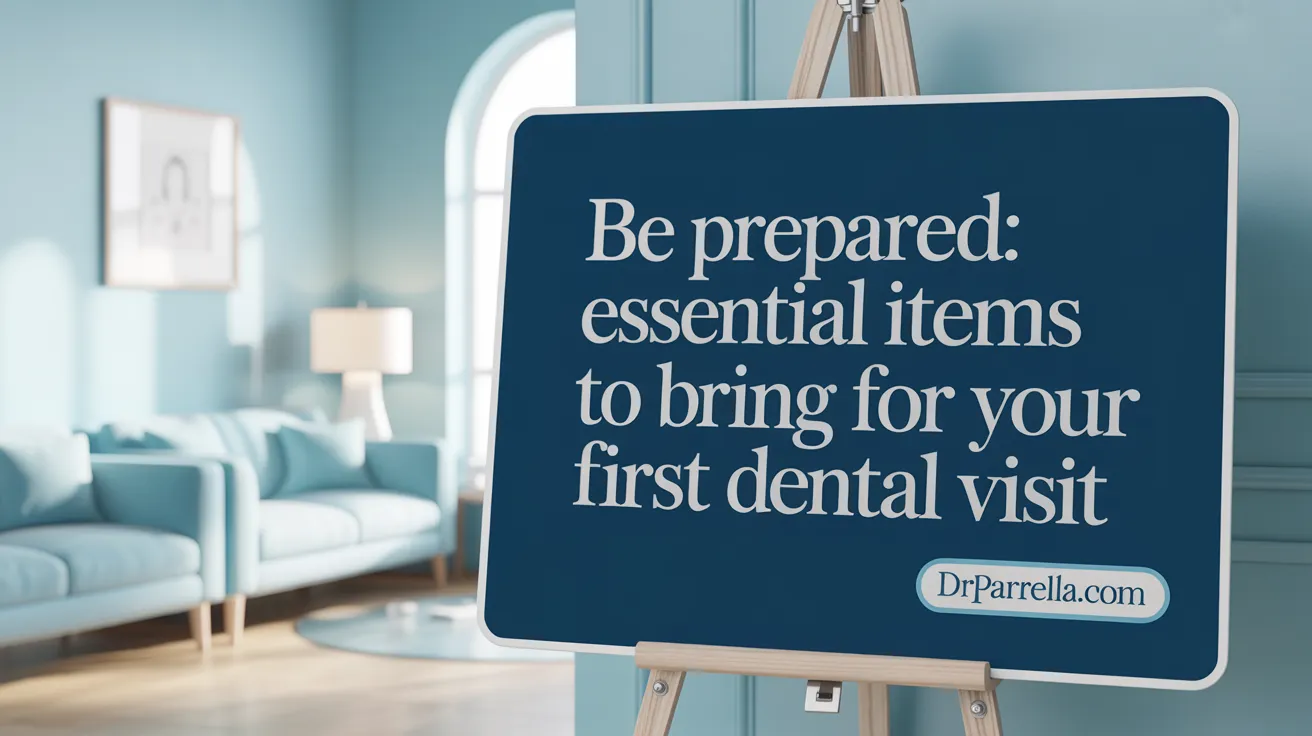
What should I bring to my first dental visit?
For your initial appointment at the dentist, being well-prepared helps ensure a smooth experience. Bring your current dental insurance card and a valid form of photo ID. It's also helpful to have any relevant medical and dental records, especially recent X-rays that are not older than six months, or referral letters if your provider has issued any.
Create a list of your current medications, allergies, and medical conditions to share with your dentist. This information is crucial for safety and effective treatment planning. If you have any concerns or specific questions about your oral health, jot them down beforehand.
Arrive at least 15 minutes early to allow enough time for check-in and paperwork. Wearing comfortable clothing and minimizing jewelry can make your visit more comfortable. Additionally, brushing and flossing your teeth before heading to the appointment can help the dentist get a clearer picture of your oral health.
If dental anxiety is a concern, informing your dental team beforehand can lead to additional support during your visit. Having this information ready and organized allows your first visit to be efficient and productive, setting a strong foundation for your ongoing oral health.
Understanding the Typical Sequence of a First Dental Visit
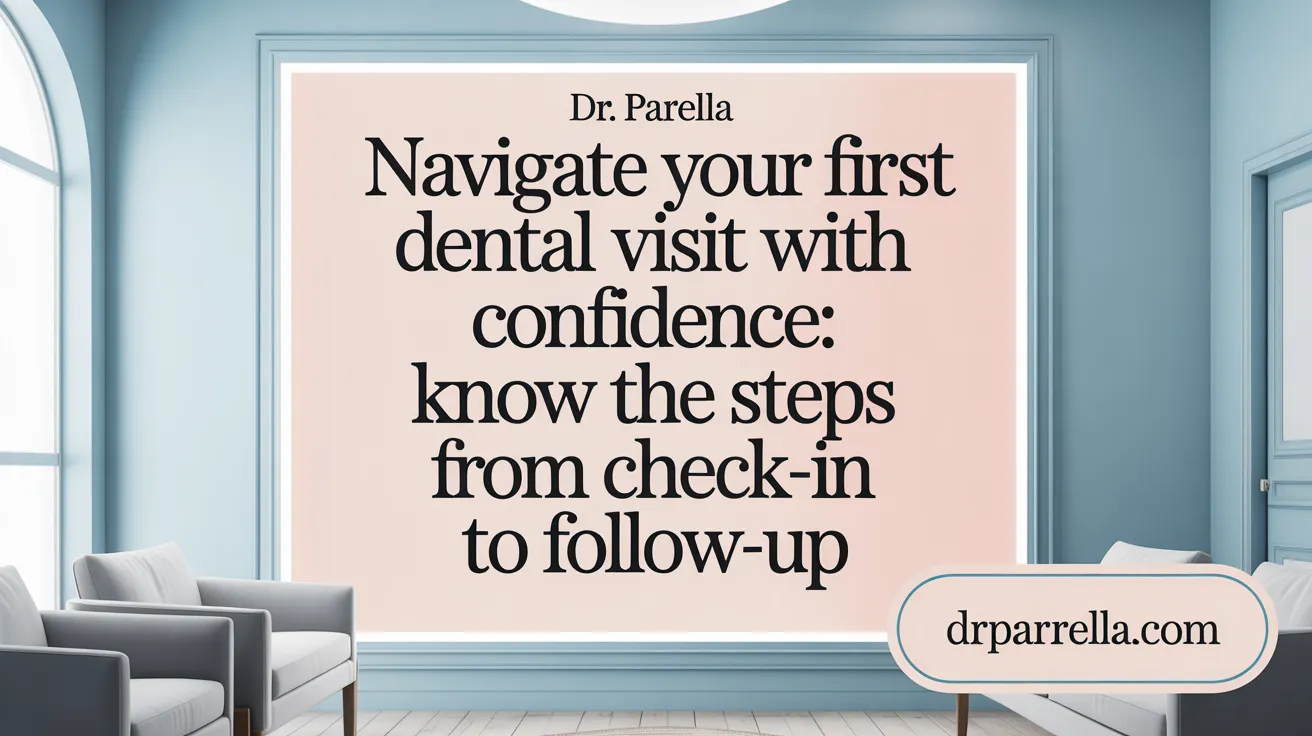
What is the typical flow or sequence of procedures during a first dental appointment?
A first dental visit generally follows a structured sequence that helps establish a foundation for ongoing oral health care.
First, patients check in, which involves completing forms related to their medical and dental history, insurance details, and privacy notices. This paperwork helps the dentist understand any medical conditions, allergies, or medications that might affect dental treatment.
Once checked in, the dentist or dental team reviews this information and discusses any concerns or symptoms reported by the patient. They may also verify insurance coverage and method of payment.
Next, the dentist performs a comprehensive oral exam. This includes inspecting teeth, gums, bite, jaw joints, and oral tissues. The dentist checks for signs of decay, gum disease, oral infections, or abnormalities.
To see beyond the surface, digital X-rays are often taken, especially if it's been more than a year since the last imaging. These X-rays help identify decay, impacted teeth, or other hidden issues not visible to the eye. Patients wear a lead apron during X-ray procedures to ensure safety.
Following the exam and X-rays, a professional cleaning usually occurs. This process removes plaque, tartar, and stains through scaling and polishing. It also provides an opportunity to assess gum health.
Additional screenings, such as oral cancer checks, may be performed, especially during initial visits. The dentist assesses the overall condition of oral tissues and may discuss preventive measures.
At the conclusion of the appointment, the dentist reviews the findings with the patient, explaining any issues, proposed treatments, and costs. They also discuss home care tips, such as brushing and flossing techniques.
Finally, the dentist and patient schedule the next visit, which might include treatments like fillings, crowns, or further preventive care, depending on the assessment.
This structured approach ensures thorough evaluation and sets the path for maintaining optimal oral health.
Managing Anxiety and Making the Visit Comfortable
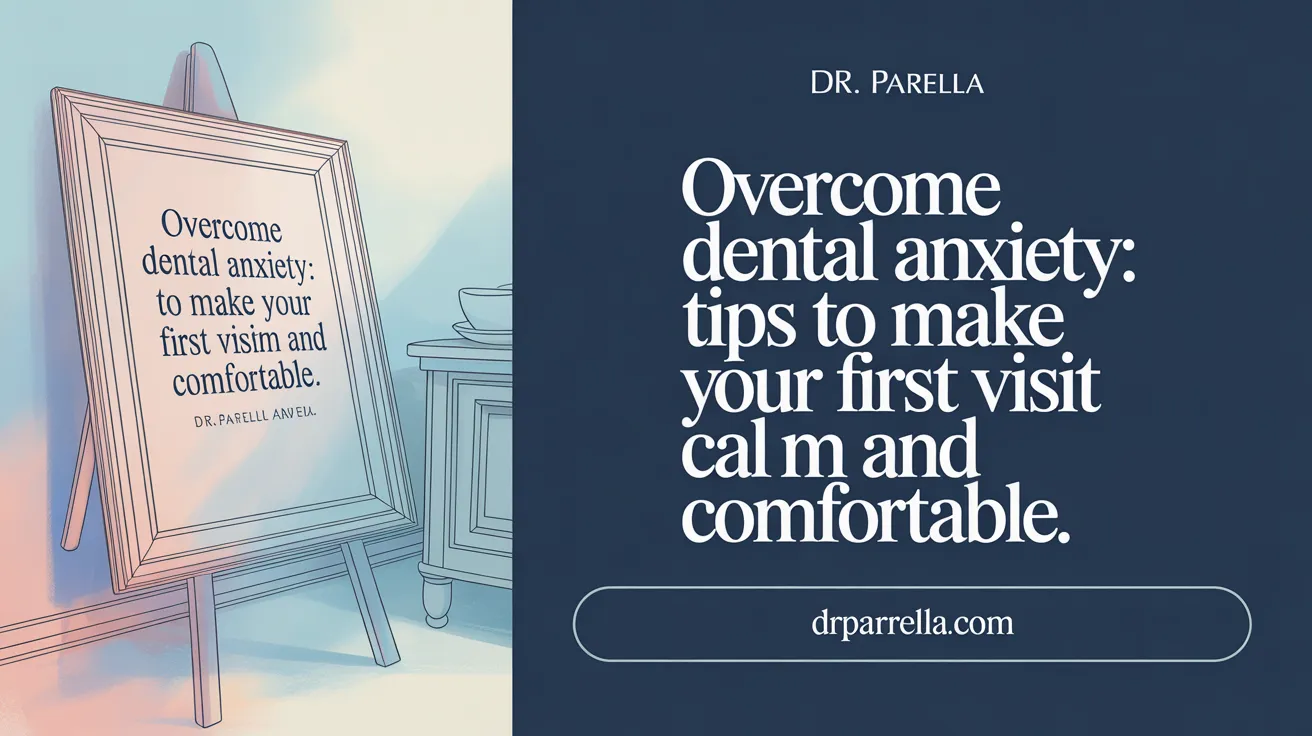 Many patients feel nervous about their first dental appointment, but there are effective strategies to make the experience calmer and more pleasant.
Many patients feel nervous about their first dental appointment, but there are effective strategies to make the experience calmer and more pleasant.
To reduce anxiety, it helps to discuss any fears or concerns directly with your dentist before the appointment. Knowing what to expect can lessen feelings of uncertainty. Dentists are often trained to provide gentle care and can tailor comfort measures to your needs.
Relaxation techniques are also valuable. Practice deep breathing, guided imagery, or listen to calming music as you wait. These methods can help lower stress levels beforehand and make it easier to stay relaxed during the procedure.
Arriving 10-15 minutes early creates a peaceful start to your visit, giving you time to settle in and avoid feeling rushed. Avoiding caffeine before your appointment can also prevent increased nervousness or jitters.
Some clinics offer additional comfort options such as sedation or distraction techniques. You might request mild sedation if your anxiety is severe or use distraction tools, like wearable calming devices, to maintain a relaxed state.
Trust is fundamental. Ask questions about each step, and communicate openly with your dental team. Feeling heard and informed builds confidence and helps foster a positive experience.
Lastly, look for family-friendly practices that prioritize patient comfort and safety. Features like soothing environments, friendly staff, and comfort amenities contribute greatly to reducing anxiety.
| Tips for Reducing Dental Anxiety | Recommended Strategies | Additional Notes |
|---|---|---|
| Discuss fears openly | Talk with your dentist | Tailors care to your needs |
| Practice relaxation techniques | Deep breathing, calming music | Use before and during visit |
| Arrive early | Get settled in | Avoid rushing and stress |
| Use sedation or distraction methods | Request mild sedation or calming tools | Beneficial for severe nerves |
| Build trust through communication | Ask questions and express concerns | Enhances confidence |
| Choose family-friendly practices | Look for supportive environments | Supports overall comfort |
By embracing these approaches, you can turn your first dental visit into a manageable and even positive step toward maintaining your oral health.
Best Practices and Tips for First-Time Dental Visitors
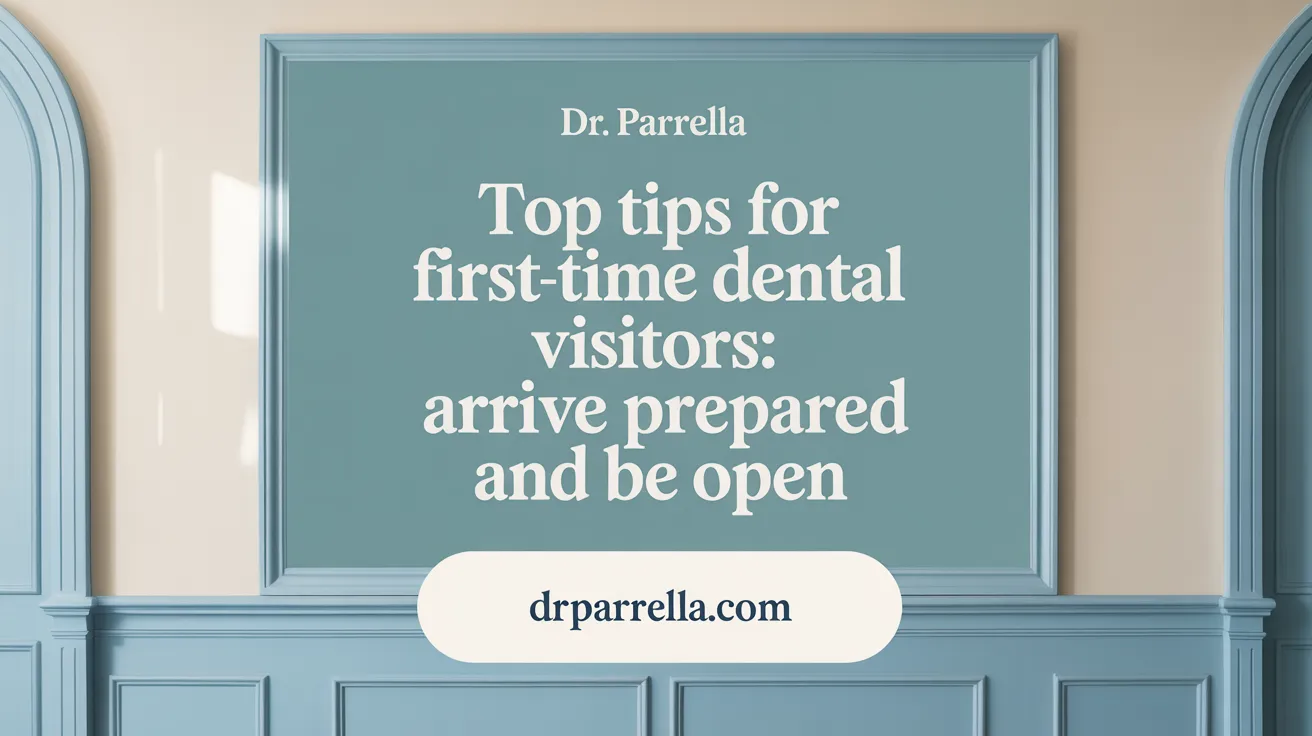
Arriving early and completing paperwork
Arriving at least 10 to 15 minutes before your scheduled appointment allows time to check in comfortably. Most dental practices offer online forms, which can be filled out beforehand to save time. When you arrive, you will typically complete new patient forms that include your medical and dental history, insurance details, and consent forms. Bringing relevant documents, such as insurance cards, photo ID, recent X-rays, and a list of medications, makes the process smoother.
Following pre-appointment instructions
Always confirm your appointment 24 hours in advance, especially if the office provided specific instructions like fasting or avoiding certain foods. Understanding the type of procedure planned helps you prepare appropriately—whether it's a simple exam, cleaning, or fillings. Proper preparation can reduce anxiety and ensure you are ready for the exam.
Brushing and flossing before the visit
Good oral hygiene before your appointment is important. Brushing and flossing help remove plaque and debris, making the dentist’s exam more effective. If your appointment includes a cleaning, being clean and fresh can also enhance your comfort during the procedure. For children, gentle brushing and avoiding sugary foods beforehand can make visits less intimidating.
Communicating oral health goals
Use your first visit to discuss your dental goals with the provider. Whether you’re interested in cosmetic improvements, are concerned about pain, or need guidance on ongoing care, sharing your concerns enables your dentist to develop a personalized treatment plan. Clear communication helps achieve the best outcomes and builds trust.
Maintaining consistent dental care
Routine check-ups every six months play a crucial role in maintaining oral health. Regular visits help catch issues early and prevent serious problems. A good practice is to mark appointments on your calendar, maintain good daily habits like brushing twice a day, flossing, and using mouthwash. Consistency ensures your smile stays healthy and bright.
Preparing children and caregivers for visits
For young children, the first dental visit should happen within 6 months of the first tooth or by age 1. Explain to children what to expect, such as gentle cleaning and potential X-rays, to ease anxiety. Caregivers should bring any medical or dental records, and prepare to answer questions about development and habits. Making visits fun and positive helps children develop comfort with dental care.
Family-friendly practice benefits
Many dental offices, including family practices, accommodate patients of all ages. They often provide gentle care tailored for children and adults alike, making visits more convenient for families. Accepting most insurance plans, including Medicaid and Medi-Cal, reduces financial stress, encouraging ongoing regular care. These practices foster a comfortable environment, easing fears and promoting lifelong healthy habits.
| Practice Aspects | What to Prepare | Benefits |
|---|---|---|
| Arrival & Paperwork | Early arrival, online forms, insurance & ID | Less stress, quicker process |
| Pre-visit preparations | Confirm instructions, fasting if needed | Better procedure outcomes |
| Hygiene habits | Brush and floss, avoid strong-smelling foods | Increased comfort and effectiveness |
| Communication | Share goals & concerns | Tailored treatment plan |
| Regular visits | Maintain schedule, good home care | Long-term oral health |
| Children's visits | Explain procedures, bring records | Comfort & positive attitude |
Embrace Your First Visit: A Foundation for Lifelong Oral Health
Your first dental appointment is more than just a check-up—it’s an opportunity to build trust, gain personalized care, and establish habits that promote a healthy smile for life. By preparing properly, knowing what to expect, and communicating openly with your dental team, you can transform anxiety into confidence. Whether you’re a parent bringing a child or an adult returning after a hiatus, these guidelines will help you make the most of your experience and set you on a path toward optimal oral health.
References
- How to Prepare for Dentist Appointment: What You Must Bring
- Your First Visit
- Going to the Dentist & What to Expect
- A Child's First Dental Visit Fact Sheet
- What to Expect at Your First Dental Appointment | TX Dentist
- What to Expect at Your First Dental Visit: A New Patient's ...
- What to Bring to Your First Dentist Appointment
- What To Expect At Your First Dental Appointment
- What to Expect at a Dentist Visit for an Adult
- What Happens At Your First Dentist Appointment?
